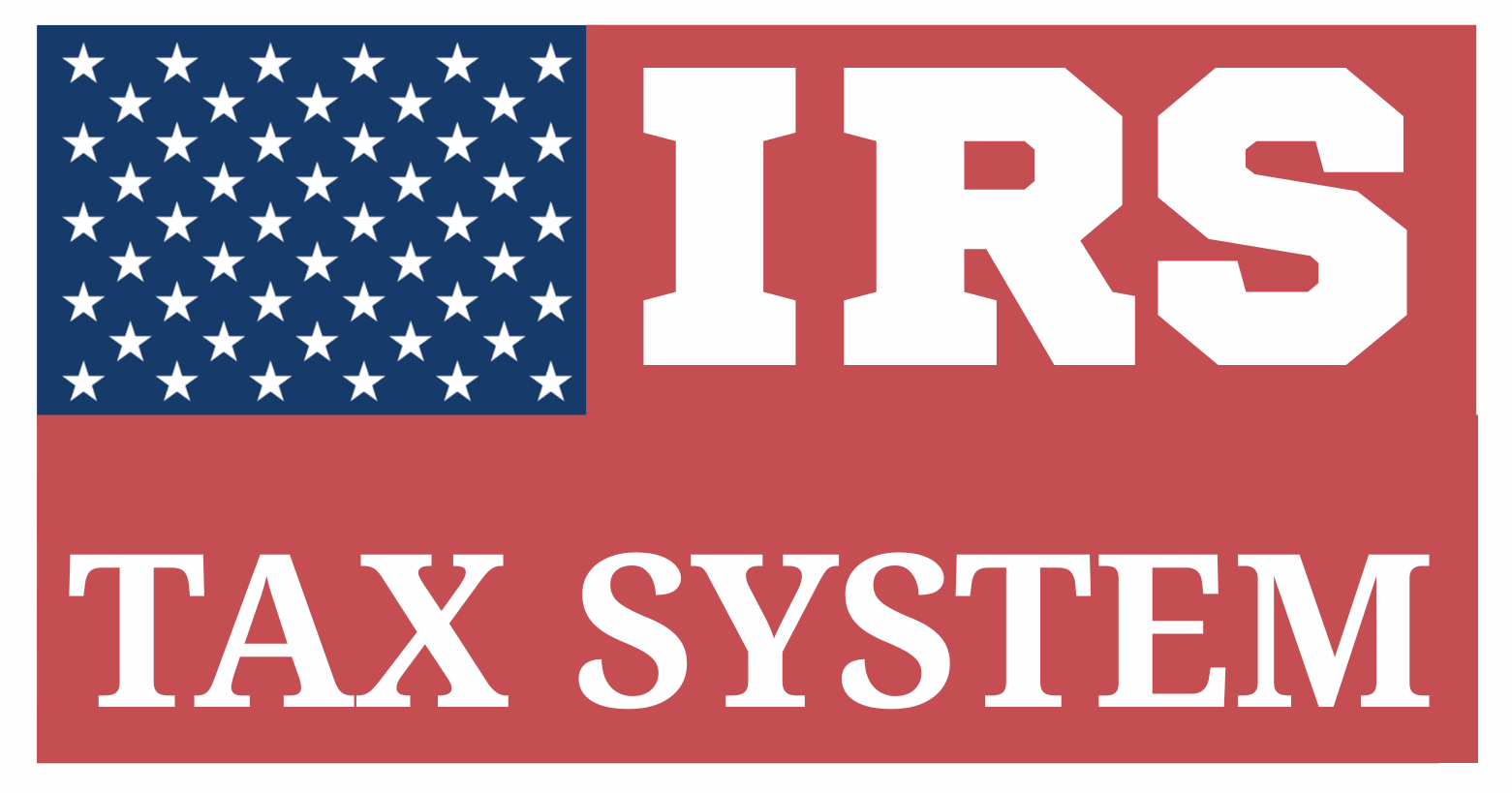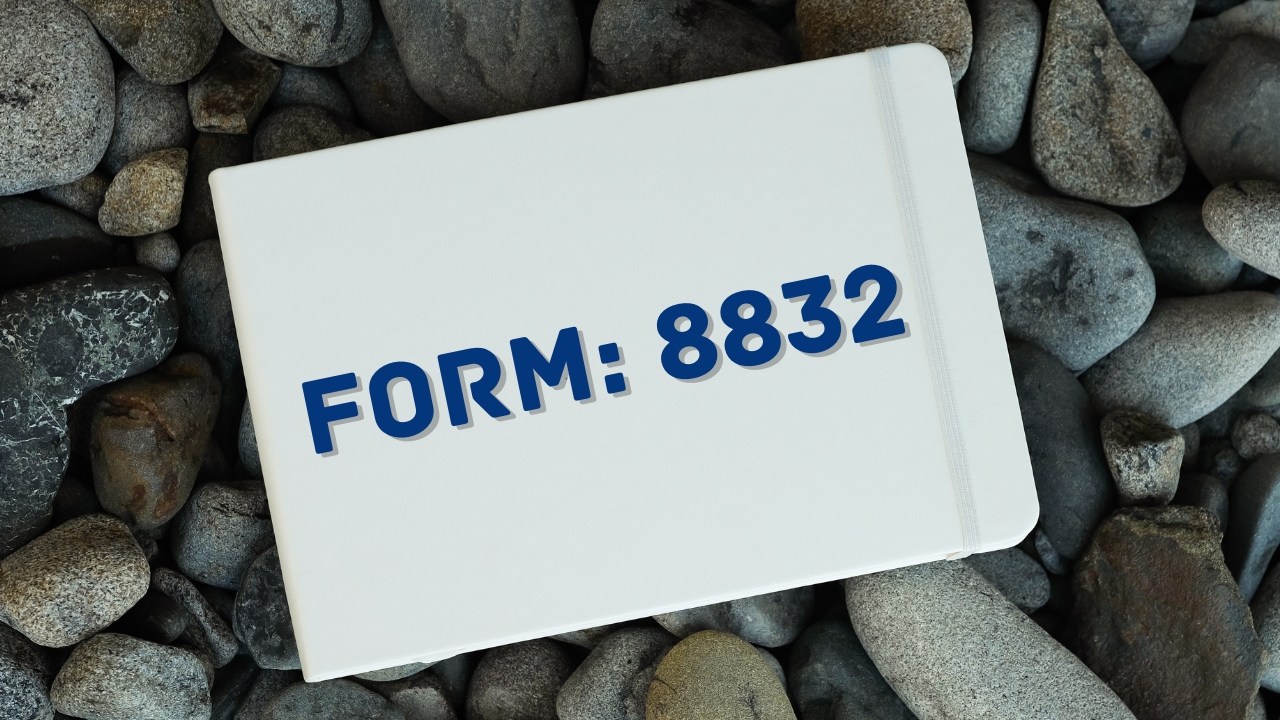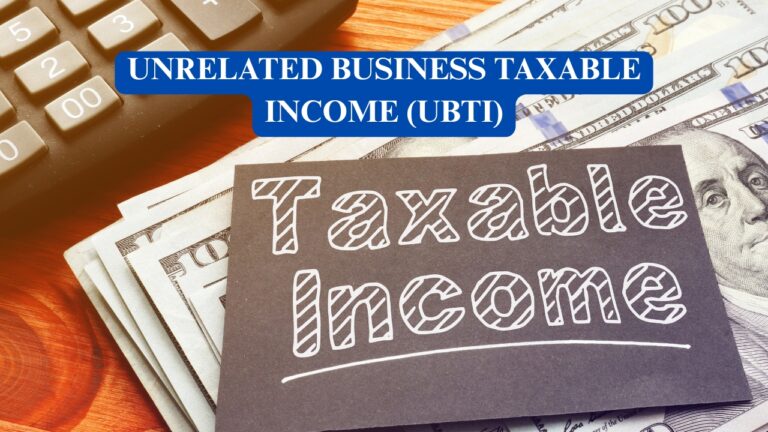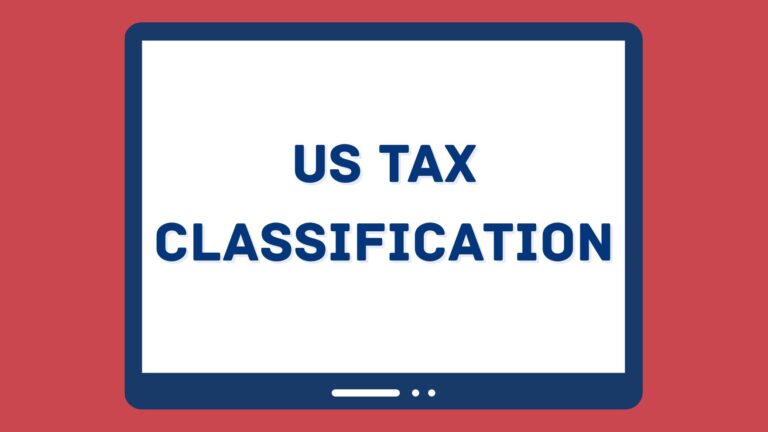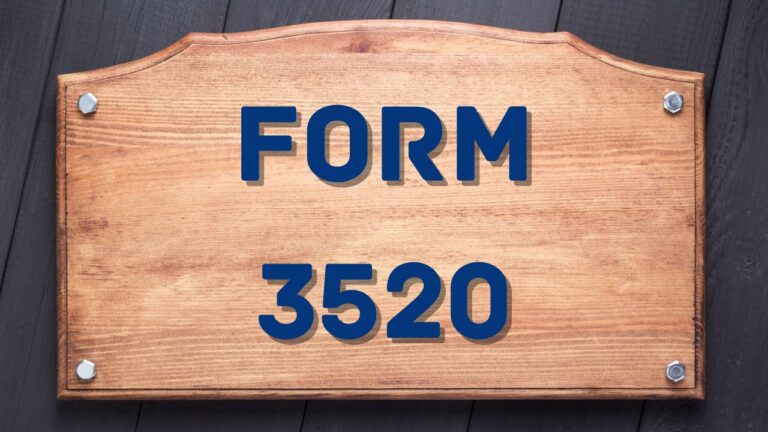Form 8832: The Perfect Synopsis
Table of Contents
A Detailed Synopsis On Form 8832
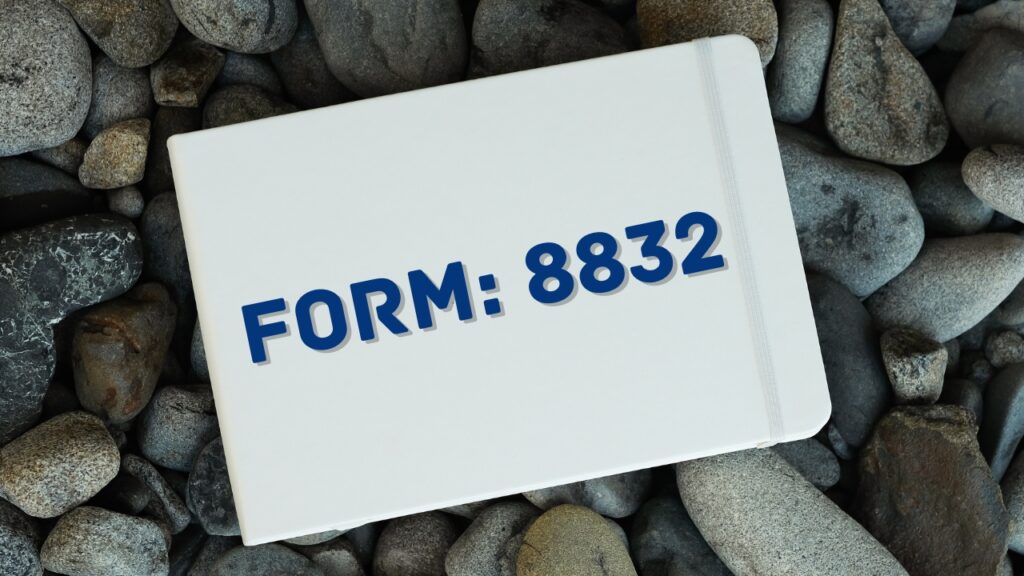
Form 8832 is a crucial tool that enables eligible domestic and foreign business entities to elect how they are taxed for U.S. federal tax purposes. The IRS provides default tax classifications based on entity type and structure. However, businesses may prefer a different classification for legal, strategic, or tax planning purposes.
Choosing the right classification affects how income is taxed, what forms are filed, and how profits/losses flow to owners. The election can have long-term implications for liability protection, audit exposure, and future reorganizations.
Who Is Eligible to File Form 8832
IRS Form 8832 is used by certain business entities to elect how they want to be classified for federal tax purposes. However, not all entities can file this form. The following outlines which types of entities qualify to file IRS Form 8832:
1. Domestic Eligible Entities
A domestic eligible entity is a business formed in the United States that is not automatically classified as a corporation under IRS regulations. These entities are allowed to choose how they want to be taxed, and can file Form 8832 to make this choice.
Examples include
- Single-member or multi-member Limited Liability Companies (LLCs)
- Partnerships that want to be taxed as corporations
- Single-member LLCs electing corporate tax treatment rather than default disregarded status
Eligible default classifications for domestic entities:
- By default, a single-member LLC is treated as a sole proprietorship for federal tax purposes unless it files an election to be taxed as a corporation.
- Unless an election is made to be taxed as a corporation, a multi-member LLC is treated as a partnership for federal tax purposes.
By filing Form 8832, these entities may elect:
- C Corporation treatment, or
- Partnership treatment (if reverting from corporate election and eligible)
2. Foreign Eligible Entities
Foreign entities are also eligible if they are not automatically classified as corporations under IRS regulations (specifically under the per se corporation list in the Treasury Regulations §301.7701-2(b)(8)).
A qualified foreign entity may file Form 8832 to make a specific election on how it is treated for U.S. federal tax purposes:
- Elect to be classified as a foreign corporation
- Elect to be disregarded as a separate entity
- Elect to be treated as a foreign partnership (if it has at least two members)
Foreign eligible entities include:
- Foreign LLCs
- Foreign partnerships
- Certain joint ventures and associations organized outside the U.S. that are not classified as corporations by default
Note: If a foreign entity is on the per se corporation list, it cannot change its classification using Form 8832—it must follow the default corporate treatment.
3. Entities Changing Classification
Entities that have already made a previous election or that were classified by default may use Form 8832 to change their classification, provided:
- At least 60 months (5 years) have passed since the most recent election, unless:
- The single-member LLC has undergone an ownership change and now has a new sole owner.
- Or the IRS grants permission to change earlier.
Entities Not Eligible to File Form 8832
Certain entities cannot use Form 8832, including:
- Corporations by default under IRS rules (e.g., incorporated under U.S. state law)
- Publicly traded partnerships
- S corporations wishing to revert to another classification (they must first revoke their S election via a different procedure)
- Non-profit organizations (e.g., 501(c)(3) entities)
- Trusts, estates, and other entities already subject to special tax rules
IRS Default Classifications vs. Form 8832 Elections: A Detailed Overview
When a business entity is formed, the IRS automatically assigns it a default federal tax classification based on two primary factors:
- The number of owners the entity has, and
- Based on its formation, the entity is classified as either domestic or foreign under U.S. federal tax law.
However, many of these entities have the option to change their classification by filing IRS Form 8832, also known as the Entity Classification Election.
Here’s a breakdown of the default classifications and the ability to change them through Form 8832:
1. Single-Member LLC (Limited Liability Company)
- Default IRS Classification:
A single-member LLC is treated as a disregarded entity for federal tax purposes. This means the LLC’s income is reported directly on the owner’s personal tax return (as if the LLC does not exist separately from its owner). - Election Options with Form 8832:
The owner of a single-member LLC may elect to treat the business as a C corporation by filing Form 8832. This election allows the entity to be taxed separately from the owner, offering potential tax planning advantages such as retained earnings and lower flat corporate tax rates.
2. Multi-Member LLC
- Under IRS rules, a multi-member LLC is automatically classified as a partnership unless it elects otherwise. It must file a partnership tax return (Form 1065), and income or loss flows through to the members’ personal tax returns.
- Election Options with Form 8832:
A multi-member LLC has the option to elect C corporation tax treatment by filing Form 8832. This may be advantageous in cases where the entity wants to avoid pass-through taxation or prepare for outside investment.
3. Foreign Eligible Entity
- Default IRS Classification:
The IRS classifies a foreign eligible entity based on local laws and its ownership structure:- If it has a single owner, it is typically treated as a disregarded entity
- If it has multiple owners, it is treated as a partnership
- Entities classified as per se corporations are automatically taxed as corporations and are not eligible to change their classification.
- Election Options with Form 8832:
Most foreign entities that are not classified as per se corporations may elect to be treated as a corporation, partnership, or disregarded entity under U.S. tax rules by filing Form 8832. This is especially useful for U.S. tax reporting and treaty benefits.
4. Corporation (Domestic or Per Se Foreign Corporation)
- Default IRS Classification: Any entity established under Any entity formed under U.S. corporate statutes is automatically classified as a corporation for federal tax purposes.
- Election Options with Form 8832:
A corporation cannot use Form 8832 to change its classification. It is locked into corporate status by default.
Note: This applies to U.S. corporations and foreign entities designated as per se corporations by the IRS, which cannot change their default tax classification.
Form 8832 Instruction: Entity Classification Election
The form is structured into multiple parts, each collecting specific details necessary for the IRS to process and validate the election. Below is a detailed walkthrough of each section and line of the form:
Part I – Election Information
This part of the form collects essential information regarding the entity requesting a tax classification change.
- Name of Eligible Entity Making the Election
- The full legal name of the business entity as registered with the IRS or the state of formation. This must match IRS records.
- Employer Identification Number (EIN)
- The entity’s Federal Tax Identification Number. The number must be valid and issued prior to filing the form.
- Address of the Entity
- This includes the street address, city, state, ZIP code, and country. This is the entity’s principal business address or mailing address.
- Name and Title of Contact Person
- This line designates an individual (such as a managing member or responsible officer) whom the IRS may contact regarding the election.
- Type of Election
- Two boxes are provided:
- Initial classification by a newly formed entity.
- Change in classification by an existing entity (e.g., from partnership to corporation).
- Two boxes are provided:
- Effective Date of Election
- You can specify the date on which the new classification should take effect. This date:
- You may choose an effective date that is up to 75 days prior to the date the form is submitted to the IRS.
- May be future-dated up to 12 months from the filing date.
- Must fall after the entity’s formation date.
- You can specify the date on which the new classification should take effect. This date:
- Is the entity a foreign eligible entity?
- This is a Yes/No checkbox. Foreign entities that are not per se corporations must indicate their eligibility to make this election.
- State or Foreign Country of Organization
- In Part II – Classification Election, provide the name of the U.S. state or foreign country where the entity was originally organized.
Part II – Classification Election
This part is where the actual classification decision is made. The entity must select only one of the available options:
- Entity Classification Options:
- A. Disregarded Entity
For single-owner entities that want to be treated as not separate from the owner (for example, taxed like a sole proprietorship if owned by an individual). - B. Partnership
For entities with two or more owners that want to be taxed as a flow-through partnership (reporting income on Form 1065). - C. Corporation
For entities that want to be treated as a C corporation under federal tax law (filing Form 1120). This option is often used to avoid pass-through taxation or prepare for venture funding.
- A. Disregarded Entity
Important:
This form does not elect S corporation status.
To elect S corporation status, an entity must first be classified as a corporation and then file Form 2553.
Part III – Late Election Relief (If Applicable)
Entities that failed to file Form 8832 on time can use this section to request late classification election relief. This part is completed only if the effective date is retroactive and the normal deadline has passed.
- Certification of Late Election Eligibility:
The entity must make a series of affirmative representations such as:
- The delay in filing occurred because of a valid and justifiable reason.
- The entity has consistently acted as if it had the elected classification.
- No tax returns contradicting the intended classification have been filed.
- The election must be filed no more than 12 months in advance of the desired effective date.
This section enables relief under Revenue Procedure 2009-41, provided all eligibility conditions are met.
Signature Section
This is a legally binding section where an authorized person signs the form. This could include:
- The sole owner of a disregarded entity.
- A managing member of an LLC.
- A general partner in a partnership.
- An officer of a corporation (e.g., CEO, CFO, or president).
The signature attests that the election is valid and that the signer has authority to act on behalf of the entity.
Filing Instructions Summary
- Where to File:
Form 8832 must be mailed to the IRS at the address listed in the official IRS instructions. This address varies based on whether the entity is domestic or foreign. - Deadline for Timely Election:
The form must be filed:- No later than 75 days after the requested effective date (if backdating).
- The form must be filed within 12 months prior to the intended effective date.
Filing Deadline and Effective Date – IRS Form 8832
When submitting IRS Form 8832 to elect or change a business entity’s federal tax classification, timing matters significantly. The IRS provides specific rules for when the form must be filed and how far back (or forward) the effective date of the classification can be.
Detailed explanation addressed below:
Effective Date of Classification Election
The effective date is the day the new tax classification will start to apply. You can choose:
- A retroactive date, which is a date prior to the filing of the form (but limited to a specific time frame), or
- A future date, which means the new classification will apply starting at a specified point after the filing.
Important Guidelines
- The earliest allowable effective date is 75 days before the date the IRS receives the Form 8832.
- The selected effective date must fall within 12 months of the date the IRS receives the completed Form 8832.
Example
If Form 8832 is received by the IRS on June 15, 2025, the selected effective date must fall between April 1, 2025, and June 15, 2026:
- April 1, 2025, is the earliest effective date allowed, falling exactly 75 days before the form was filed.
- No later than June 15, 2026 (12 months later)
Timely Filed Election
For the election to be considered timely, the form must be submitted within the allowable window described above, relative to your desired effective date.
- If you request a retroactive election (up to 75 days before), the form must be received by the IRS no later than 75 days after your intended effective date.
- If filed outside this timeframe, the election is considered late, and you’ll need to request late election relief in Part III of the form.
Late Election Relief Option
If the form is not submitted within the required timeframe, the entity may still request the IRS to honor the intended classification by:
- Completing Part III of Form 8832
- Certifying that:
- There was reasonable cause for the delay,
- The entity has consistently filed returns and operated under the intended classification,
- Since the form is being filed no later than 3 years and 75 days after the requested effective date, the late election may be accepted.
IRS Relief under Rev. Proc. 2009-41 allows for leniency in some late-filed elections, provided all conditions are satisfied.
Detailed Example: Form 8832 Election
ABC Consulting LLC, a domestic single-member LLC owned by John Doe, was formed on January 1, 2025. The IRS automatically treats it as a disregarded entity unless an election is made. However, the business decided to elect corporate tax treatment and filed IRS Form 8832 on June 5, 2025, requesting an effective date of April 1, 2025. Since the requested date falls within the allowable 75-day retroactive window, the election was considered timely. Accordingly, ABC Consulting LLC will be recognized as a corporation for federal tax purposes beginning April 1, 2025.
Timing Check
- IRS received date: June 5, 2025
- Requested date: April 1, 2025
- Retroactive window allowed: Up to 75 days before June 5 → April 1 falls within the window
Result: Timely election accepted — no late relief required
Outcome
- Effective April 1, 2025, the entity will be treated as a corporation for federal tax purposes.
- Must file Form 1120 starting from Q2 of 2025
Common Mistakes to Avoid When Filing Form 8832
- Missing the 75-Day Retroactive Window
Taxpayers often request an effective date that falls outside the 75-day window before the IRS receives Form 8832. If this window is missed, the election will be rejected unless late relief is requested and approved. - Incorrect Entity Type Selection
Failing to select the correct current and intended classification (e.g., partnership, disregarded entity, or corporation) may cause the form to be considered invalid or processed incorrectly. - Omitting Required Signatures
The form must be signed by an authorized person (such as an owner or officer). Missing or unauthorized signatures can lead to rejection of the election. - Filing for Ineligible Entities
Certain entities—like corporations already classified as corporations—cannot use Form 8832 to change status. Such an action will lead to the IRS rejecting the request. - Not Keeping a Copy for Records
Taxpayers sometimes overlook retaining a copy of the submitted form Keeping a signed copy is important for future reference and proof of timely submission. - Incorrect EIN or Name
Providing the wrong Employer Identification Number (EIN) or legal entity name may delay processing or lead to errors in IRS records.
Frequently Asked Questions (FAQs)
Can I file Form 8832 electronically?
As of now, Form 8832 must be mailed to the IRS.
Do I need an EIN to file Form 8832?
The entity must have an EIN prior to filing.
Is Form 8832 reversible?
Generally no, you cannot make another election for 60 months unless you meet exception criteria.
How does Form 8832 differ from Form 2553 in terms of entity classification and tax treatment?
–Form 8832 is for entity classification (e.g., LLC to C Corp).
–Form 2553 is for electing S corporation status after choosing to be treated as a corporation.
